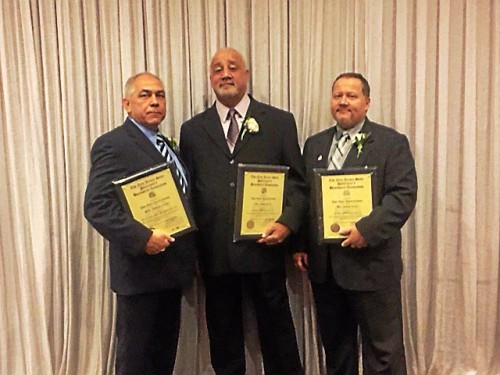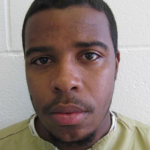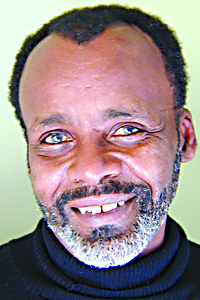![Zihqwan Clemens]()
Zihqwan Clemens
Detectives who investigated the shooting death of Andre Corbett focused on a dispute, possibly over turf, he may have had with drug dealers working the blocks in and around the crime-ridden housing complex where he was gunned down in 2013, police records show.
While witnesses told the detective who worked on the homicide case that they believed Corbett’s death was somehow drug-related, prosecutors never suggested drugs as a possible motive during the murder trial of suspected killer Keith Wells-Holmes. Not short on innuendo, they lacked the evidence upon which to base such an assertion.
Wells-Holmes, who had jokingly referred to himself by a nickname given to a notorious cocaine kingpin, was ultimately cleared in Corbett’s murder.
One of the few references to drugs at his trial came when convicted felon and admitted drug dealer Michael “Murder Mike” Barnes memorably referred to Corbett as a “crackhead.”
The Trentonian had obtained a 25-page police report written by Mercer County Prosecutor’s Office Detective Bryan Cottrell shortly after the conclusion of Wells-Holmes’ murder trial.
The report, filed in January 2014, contains more than 50 references to drugs, in which witnesses described Corbett as a “crackhead,” said that he was known to “hustle” drugs and say they believed he had “maced” someone who had tried to steal one of his drug buyers days before he turned up dead. “Hustle” is a common street term used to describe selling narcotics.
The report also contains purported details of the murder investigation into Wells-Holmes, the half-brother of convicted killer and jailed Sex Money Murder leader Omar Aikens, and his co-defendant, alleged getaway driver Zihqwan Clemens, that did not come out at Wells-Holmes’ trial.
The newspaper is publishing those details now that prosecutors said at a bail reconsideration hearing earlier this week they intend to move forward with the murder case against Clemens, who is being tried separately.
The case against Clemens
“The proofs against [Clemens] are strong,” Assistant Prosecutor James Scott said. “In fact, they are as strong as they were when bail was set” when Clemens was arrested.
Clemens, who was granted immunity to testify against Wells-Holmes at trial, has rejected prosecutors’ plea offer of 30 years in state prison for murder.
A judge this week agreed to lower Clemens’ bail to $250,000 from $1 million in light of Wells-Holmes’ acquittal.
However, Clemens is still being held without bail on a probation violation stemming from a previous drug conviction.
Clemens, who has been held for more than two years on the murder charge, plans to plead guilty to the probation violation, hoping a judge will grant him a time-served sentence.
If Judge Robert Billmeier agrees to it, that would pave the way for Clemens to post bail on the murder charge and remain free until his case is resolved.
Clemens’ attorney, Andrew Duclair, has questioned Scott’s decision to move forward with the case against his client despite the acquittal of suspected killer. Duclair said the reasons are simple.
“He didn’t participate in the murder,” Duclair said. “[There’s] nothing of a conspiracy. Mr. Wells-Holmes is not guilty therefore my client is not guilty. By default, my client’s not the shooter. How on earth can we draw a logical conclusion that my client is charged with murder?”
Duclair also danced around the possibility prosecutors are moving forward with their case against Clemens because they were dissatisfied with his testimony during Wells-Holmes’ trial, when he got on the stand and exonerated Wells-Holmes of killing Corbett.
Clemens’ testimony appeared to contradict a prior statement he gave police implicating Wells-Holmes in the murder.
Scott said his position is that Clemens was not truthful on the stand, though he did not say whether prosecutors will seek a perjury charge.
“The state would argue he lied on the stand,” Scott said.
The Trentonian had requested an interview with Wells-Holmes following his acquittal. He had agreed to an interview but rescinded when he realized he would not be paid for it.
‘Boston George’
Unlike Wells-Holmes, Clemens also faces a drug charge after authorities seized more than two bricks of heroin from inside his Parkside residence during the course of their murder investigation.
According to the police report obtained by The Trentonian, authorities also found two small baggies of marijuana on Wells-Holmes during a stop-and-frisk a day after the murder.
![Keith Wells Holmes]()
Keith Wells Holmes
Wells-Holmes was charged with marijuana possession under 50 grams, a disorderly persons offense, which was remanded to municipal court, according to a spokeswoman for the Mercer County Prosecutor’s Office.
Caroline Turner, Wells-Holmes’ attorney, said the fact that police found marijuana on her client is irrelevant to the murder. She maintained that her client is innocent and that he is committed to bettering his life now that he’s free.
“I’d stake my life on it,” Turner said.
Detectives never established a connection between Corbett’s murder and two small baggies of marijuana found on Wells-Holmes, who was frisked Jan. 22, 2013, outside of a city deli on the 100 block of Oakland Street
The deli was located near the gritty Oakland Street housing complex where Corbett was murdered a day before.
Detectives approached Wells-Holmes after they noticed he appeared to be wearing similar garb as the suspect who fatally shot Corbett the day before.
Wells-Holmes was asked if he had anything on him and offered that he some marijuana in his pants pocket.
Detectives also found a cell phone and a bundle of more than $600 in cash, according to the report.
Wells-Holmes’ Metro PC cell phone came back as registered to “Boston George,” as in George Jacob Jung, the notorious drug kingpin depicted in the movie “Blow.” Wells-Holmes told detectives he liked the movie.
As for the marijuana, Wells-Holmes told detectives he had planned to go home and smoke it before he was stopped.
Wells-Holmes never quite made it home as prosecutors authorized warrants charging him and Clemens with Corbett’s murder.
‘Crackhead’
Prosecutors’ case against Wells-Holmes boiled down to surveillance footage that captured a black man, in dark clothing and gripping a handgun in his right hand, unload multiple rounds on Corbett from point-blank range.
Wells-Holmes is left-handed, a key discrepancy. Further, prosecutors lacked a clear motive in Corbett’s slaying, suggesting Well-Holmes killed Corbett following an exchange of words.
But according to the police report, witnesses were convinced Corbett, known as a “Dre Born,” had been killed over drugs. Marijuana was found next to his body, according to the police report. Money was found still in his pocket, ruling out a possible robbery gone awry.
The report quotes several witnesses. One described Corbett as a “crackhead” who was known to “hustle” around the area.
The witness “further related that he was from the area and was rumored to have stolen several drug dealers’ stash of narcotics,” the report said. “[The witness] states that ‘Dre Born’ is known to her to ‘hustle’ sometimes selling and using both marijuana and crack (crack cocaine).”
Detectives were also told that “Andre smokes coke, referring to crack cocaine, and that he often sells ‘ill,’ which [the witness] explained to me as being fake crack cocaine,” Cottrell wrote.
However, a close friend of Corbett’s whom he had stayed with the night before he was killed disputed that.
Corbett’s friend, however, was one of the witnesses who told police Corbett had “maced” someone days before his death.
The woman “did not know what the argument was over but that ‘Dre’ had stayed inside of her apartment the evening that it occurred and ‘Dre’ did not go outside and appeared worried,” Cottrell wrote in his report.
Another witness told police the same story, that “she heard that Andre had recently maced an unknown person who had tried to steal a sale from Andre.”
The witness explained “a ‘sale’ was a term used for another drug user who was buying crack cocaine,” according to the report.
Cottrell never reached a conclusion in the report about whether the alleged drug-related macing and Corbett’s death were connected.
But Turner used it as part of her third-party guilt defense implicating Isiah Greene as Corbett’s real killer.
The DNA of Greene, who is set to go on trial for the murder Quaadir “Ace” Gurley, was found on a can inside a gold van a witness identified as the getaway vehicle the killer climbed into.
Search warrants
Police believed Wells-Holmes and Clemens were dealing heroin after they executed search warrants on their phones and their residences. Investigators found two bricks of heroin inside Clemens’ home.
But they found no proof, beyond some text messages on Wells-Holmes’ phone, that he was a drug dealer, according to the report.
“A review of numerous text messages … indicate that Wells-Holmes distributes heroin and other narcotics including marijuana and crack cocaine in the Trenton area,” Cottrell wrote in the report. “At least one of these text message conversations with an unknown party on January 21, 2013 places the sale of a brick of heroin (fifty bags of heroin) in the Mellon Street area,” the report said.
Wells-Holmes lived on the first block of Mellon Street.
Investigators also found “several texts about trading heroin for .380 bullets,” on Clemens’ phone, the report says. A text from an unknown individual also asked Clemens if he had a gun for sale, the report says.
Retaliation for rape?
Among the lingering questions in Corbett’s murder, two are elusive: If not Wells-Holmes, who killed Corbett? And if his murder was not drug-related, why would someone want him dead?
Prosecutors’ purported motive that Wells-Holmes killed Corbett following an exchange of words did not hold much weight with the jury.
The murder seemed more personal as silent surveillance appeared to capture the killer jawing with Corbett as he paralleled him outside the gate of the Oakland Street housing complex.
Scott told jurors Wells-Holmes made a snap decision to kill Corbett.
“He decided at that minute he was going to kill Andre Corbett,” Scott said.
But the killer seemed deliberate, appearing to hide the handgun on his side and not opening fire until he was an arm’s length away. Corbett did not stand a chance.
The Trentonian reached out to Cottrell on Wednesday to see whether the detective had investigated any links between Corbett’s criminal past and his murder but did not receive a call back.
In 2008, Corbett was charged with rape, court records show.
A woman had complained to police about a sexual assault that occurred July 4, 2004 but Corbett was not charged until he was matched to a DNA sample, according to published reports.
Corbett had maintained the encounter was consensual, according to published reports, but ended up pleaded guilty to third-degree aggravated assault. He spent roughly nine months in jail and was eventually sentenced to four years of probation, according to online court records.
Previously, in 2007 he was sentenced to three years in prison on drug charges, according to court records.
![]()























